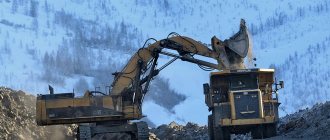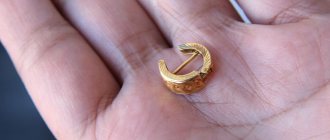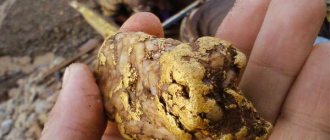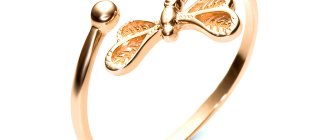Greetings! Professional mining of precious metals is carried out by state industrial companies and holdings that have permission to do so. To do this, they involve geologists and mineralogists, use suitable equipment and conduct soil tests. However, an ordinary person can find a nugget and receive a reward for it. I will tell you where you can find gold and how to mine it correctly.
What does gold look like and where is it found in nature?
The value of this metal is due to the difficulty of mining: it is difficult to find, and even more difficult to extract. The bulk is in a sprayed state and distributed throughout the planet; it can even be detected in people (about 10 mg). In the waters of the World Ocean there are approximately 9 billion tons of aurum (about 6 mg per ton).
The presence of gold in the rock is modest compared to previous indicators - only 0.25 g/t. However, humanity has not yet figured out how to effectively extract the atomized metal, and therefore about 0.00002% of all reserves in the form of grains and nuggets are subject to extraction.
Au, which can be found in nature, has a dull luster, yellow color interspersed with impurities. Pure nuggets are not found.
Where to dig? Maybe try it in the forest?
Treasure hunting in our country began relatively recently. In the early years of the development of this hobby, diggers faced only two problems - finding funds to buy an expensive device and the excessive curiosity of strangers. Although in the latter case, we must pay tribute, only interest and goodwill were shown. The same cannot be said about the present time.
Now, apart from the law on excavations adopted “on the sly” last year, it is very difficult to find places where one could dig. We are, of course, talking about those places where at least a little old coins come across. And their number is rapidly declining. The vast majority of them have already seen more than a dozen comrades, which is why walking there only causes despondency and disappointment. And this sad statistics will not be brightened up even by the fact that many treasures recovered recently are found in well-trodden places.
Diggers who have not only a lot of free time and desire, but also the appropriate equipment and training are in a somewhat advantageous position. Namely, old maps, SUVs, navigators, and experience behind us.
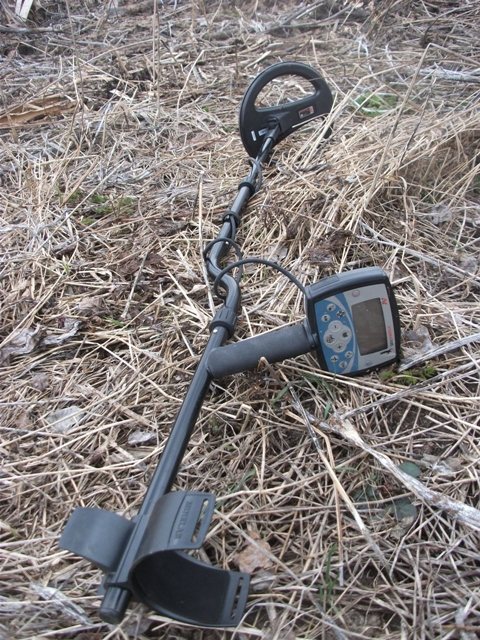
During the season they still manage to scout out several promising places where no treasure hunter has yet set foot. However, the costs here are considerable, judge for yourself - ancient maps, which are not in the public domain, cost from 2,000 to 5,000 rubles per district of any region. And just how much money does it cost to pump up an SUV properly in order to be able to climb very far - tens and even hundreds of thousands of rubles. In fact, there are only a few of those who are engaged in treasure hunting, so to speak “professionally”, and it is they who get the sweetest places.
What can we do, ordinary diggers who go out into the fields just because? Maybe check the plowed tract again and try your luck there, or maybe visit the former estate in the hope that someone missed the treasured treasure, or even go to neighboring lands? Of course, you can do this, but it’s better to study your area in more detail and go in search of finds in places that are not usually visited by diggers. These are abandoned beaches, destroyed bridges and crossings of rivers and streams, ancient roads and forests. Yes, yes, exactly the forest, it may seem to many that it is too difficult and extreme, but what to do if only untouched places can still be found there.
For example, right next to this forest stream (there seemed to be a small settlement on the edge of the forest), I picked up silver 20 kopecks, and the preservation was simply amazing.

Search in the forest
Let's start with the fact that this activity is really difficult and has nothing in common, other than picking up finds, with a walk through a plowed field. Copping in the woods is always fraught with difficulties.
First of all, this is the ability to navigate in the forest, the second is the majority of our forests are accessible only on foot, and sometimes it’s not very close to walk, the third is wild animals, the fourth is the difficulty of digging, there are only roots in the soil. Well, probably the biggest misfortune is ticks and midges. There are sometimes so many mosquitoes and midges that even the most impenetrable comrades lose their nerve.
However, we still managed to find one cool place last summer, from which we picked up a decent amount of coins and even one treasure chest of hundreds of silver coins. It was an old tract, simply an ordinary forest, and only the remains of foundations and house pits indicated that people had once lived here. And since there were people, that means there will definitely be coins.
Therefore, you can familiarize yourself with our experience:
An old untrodden tract - a treasure hunter's paradise Another tract - there are coins!!! How we dug into a place strewn with broken bricks - a treasure of 100 coins
Where to look and what to look for
There are few places to search in the forest, but they still exist. To find them, you will need maps, not only old ones, but also quite modern ones, for example, the General Staff.
By studying the PGM, Mende or Schubert maps, it is possible to calculate the tracts that once stood where the forest now grows. The surrounding relief and terrain are constantly changing; this is not noticeable for several years, but after tens and hundreds of years the changes are significant. In addition, in forested regions there were often settlements in remote places; among the thicket of the forest, wasteland was cut down, and settlements or farmsteads arose.
Modern topographic maps and forestry maps may help more accurately determine the location of these villages, because some of the wastelands are not completely overgrown.
They will also tell you the location of the once existing house of a forester, beekeeper, hunter or postal station.

When working with maps, first of all, attention should be paid to wastelands, clearings, intersections of forest roads, hills and hills without forest, as well as the banks of reservoirs. It’s worth mentioning right away that if it is not possible to establish signs of people being there, there is nothing to do there, there will be zero finds.
There won’t be a lot of coins in the above-mentioned places (except for the destroyed villages) due to the fact that these were not crowded places.
The specifics of a forest dig require the availability of the necessary equipment. These are, first of all, an axe, a compass and repellents. Gnus, in my opinion, is the greatest evil in the summer, and therefore we don’t go out without spray cans)) We tested Reftamid and Moskitol, for those interested, here’s their comparison.
Of the metal detectors, those that have a good target detection depth will be preferable. Simple devices often cannot see the target through a thick layer of humus and numerous roots. When we were digging through the treasure, we used Minelab 705, but the standard coil was replaced with a regular mono, because it more accurately “cut” the small coins that were in the treasure (we found 3 pieces, such small silver 5 kopecks, which, oddly enough, cost from 2000 rubles per piece).
The most valuable finds will include the ubiquitous lost coins, signs, crosses and copper utensils.
The safety of finds depends on the type of soil; on sandy soils the condition will be excellent, on loams it will be in average condition. But in any case, in the forest, a coin has a better chance of remaining unharmed than in a field; they don’t plow here and don’t pour fertilizer.
The accompanying material mainly consists of shell casings, horse meat, corks, pieces of household equipment and dishes, and ferrous metal.

It will seem to many that it’s somehow not very dense, perhaps this is so, but the very fact of searching in a place unknown to you is inspiring. And who knows what the forest is hiding from us, what was here several centuries ago.
Types of deposits
Territories where gold lies on a scale sufficient for industrial mining are rare. Such places are called deposits. Also, a small amount of Au is found in deposits, placers, and ores.
Bedrock or ore deposits
Primary (primary, ore) accumulations appear in the mountains:
- In the deep layers of the planet, under the influence of high temperatures and strong pressure, the combination of chemical elements forms solutions of gold and quartz.
- Then the hot compounds move upward along cracks in the crust.
- Closer to the atmosphere, temperature and pressure drop, the shape of the aurum is destroyed, and the quartz crystallizes.
- The output is ore interspersed with gold. As a result of temperature changes, weathering, precipitation, and the actions of microorganisms and plants, the metal is gradually released.
Colluvial placer
Occurs on the surface during the destruction of primary gold deposits. It is also called secondary and is considered the least profitable for extraction.
Eluvial deposits
It is transported by water flows along river beds, and since aurum is one of the densest and heaviest metals, the metal settles and accumulates in suitable places. Placer gold can be found in the watersheds of major waterways in the form of debris and sand.
Residual deposits
These are Au grains formed as a result of weathering of a gold-bearing vein and located in close proximity to it.
Bottom sediments
The bottom of reservoirs consists of sedimentary formations - stones, sand, gravel, clay, lying on bedrock. As these materials are washed away from rocky terrain by large rainfall streams, depressions are formed in the riverbeds. Over time, the precious metal enters the water and settles in a pocket along with other masses, accumulates and creates bottom deposits.

Terrace deposits
Sometimes a river, having cut through the ground, goes down, and the old bottom remains above the water level. This is called a terrace. It can be directly above the channel or located at a distance from it. The deposits remain on it.
Main signs of the presence of gold
Not only ordinary people, but also owners of industrial enterprises dream of knowing where the mines are located. List of places where metal can be found:
- Associated ores in the ground.
- Dry riverbeds. Before starting the search, it is necessary to find out whether anyone in that area managed to pan for gold, and if so, then it is worth looking for an oxbow lake not far from the current river.
- High banks. Relevant when deepening the riverbed, when gold deposits remain above the water level.
- Ancient water roads. After studying ancient reports on gold mining, you can go to where rivers with aurum flowed in ancient times.
Yellow metal satellites
Gold is almost always bound with iron (magnetite, hematite). Therefore, black, reddish or tan soil is one of the main signs that a jewel can be found here.
Since veins of precious metal are formed inside quartz ore, its presence in the selected area can also indicate aurum deposits.
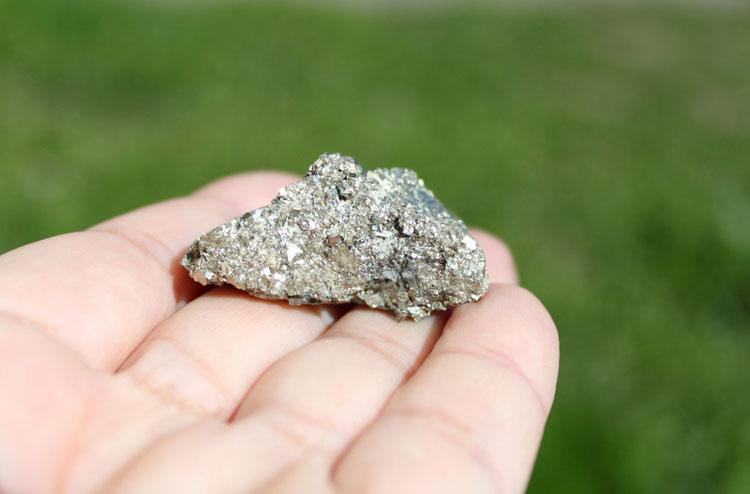
Gold content of quartz
List of external signs to help you find Au:
- Porosity indicates that ore minerals accompanying gold have disappeared from quartz.
- A yellow or cherry-red hue indicates sulfide decomposition.
- The presence of visible gold in crushed and wetted ore.
- Banded rocks or with the inclusion of a black mineral (tourmaline).
- White or glassy translucent quartz with dispersed bluish or grayish sulfides.
Kolchak's Gold
Everyone who has been to Siberia has heard about a treasure hidden somewhere in the taiga. According to documents dated 20-30 years of the last century, Kolchak took possession of a huge part of the imperial treasury. Loaded carts with gold coins and bars, precious stones and works of art did not reach Kolchak’s headquarters. According to legend, some of these treasures are buried somewhere in the Peipus pits in the outskirts of Lake Baikal. However, absolutely accurate historical data is associated with this treasure. In 1919, a train carrying part of the treasury of the Russian Empire crashed into the waters of Lake Baikal as a result of the railroad being blown up. However, the high depth of the lake has not yet allowed even part of the two-hundred-ton gold treasure to be found. True, in the recent past - in 2009 - very important attempts were made - they looked for the treasure with the help of the Mir underwater station, but nothing happened. Future generations of treasure hunters will have to find it.
How to choose the right place to search
Where can you find deposits? Before you start searching, find out where gold was mined and check them. Old mines, rivers and streams are suitable. Studying geological data and remembering the differences between important minerals - granite, slate and gneiss, quartz and feldspar - will help. They are almost always present in most places where aurum can be found.
Beginners should not try to find out how professionals search for such points - an independent search without knowledge and experience will most likely end in nothing.
Best place to mine
Of course, large deposits have already been explored by industrial enterprises, but gold can be found in areas that are of no value to holdings. Despite their small size, the content of Au and gold nuggets there is high, so they can be successfully mined.
Rich places in Russia
The forests of Siberia are considered a region rich in gold, where active study of soils and extraction of the resource is currently taking place. There a person can find a nugget by accident and not even realize it. The list also includes the Amur Region, Yakutia, Kolyma, and Krasnoyarsk Territory. Large mines are located in Norilsk.
You need to understand that all the places about which there is information in the public domain have long been occupied by industrial enterprises.
Search methods and metal detector substitutes
Using vines (metal rods)
Dowsers are still used to find, for example, a place for a future well. The main tool of such people is a pair of thin steel/aluminum rods, bent at right angles like the letter G. The dimensions of such a unique antenna are approximately 350...400 by 80...100 mm, with a rod or wire diameter of 4...6 mm.
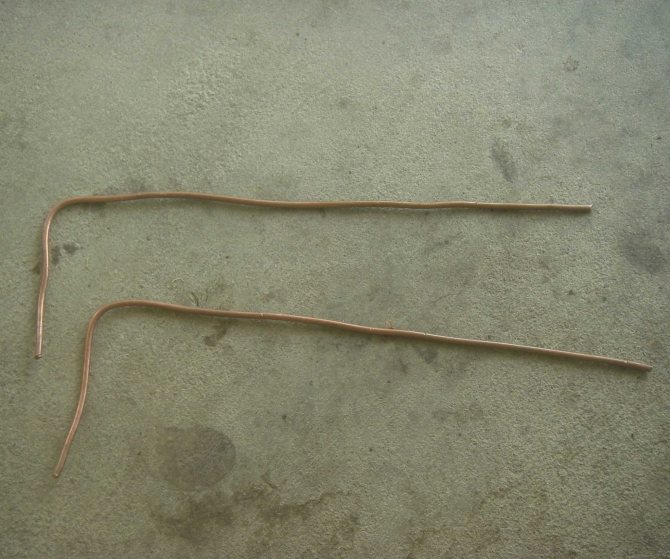
Homemade vine made of copper wire
The method is based on the fact that such antennas pick up signals from a weak electromagnetic field, which is emitted during various anomalies in the ground. The cause of such anomalies, however, can be not only metal parts of equipment or structures, but also voids in the ground.
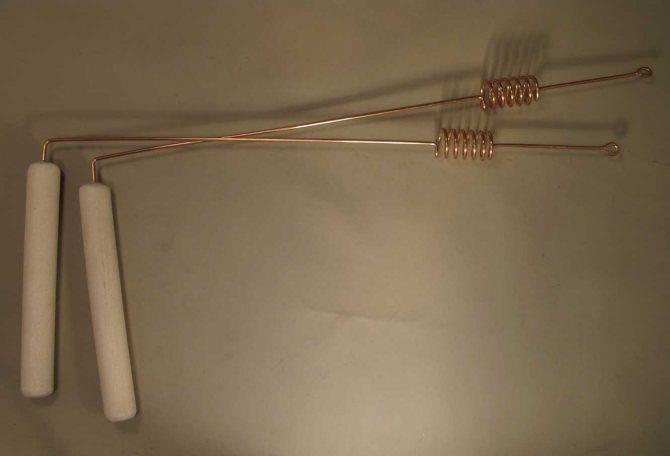
You can buy ready-made vines
It is better to use metal rods in the summer: not because it is more convenient, but also because any layer of snow screens electromagnetic radiation, thereby significantly weakening the signal. How to find scrap metal underground without a metal detector, but using only twigs? They are taken in the hands without pressing them to the fingers, so that the rod is able to freely rotate at a certain angle, after which they are set in their original position, parallel to each other, and begin to slowly move diagonally along the examined area. Where some anomaly is discovered underground, the rods will rotate at an angle of at least 45...600. In this case, the direction of rotation does not matter. Having marked this place, the search continues from the opposite corner of the site. It’s good if the twigs show angular deviation in this case too. But the result of the search may, alas, be not metal, but a carefully compacted cavity in the ground...
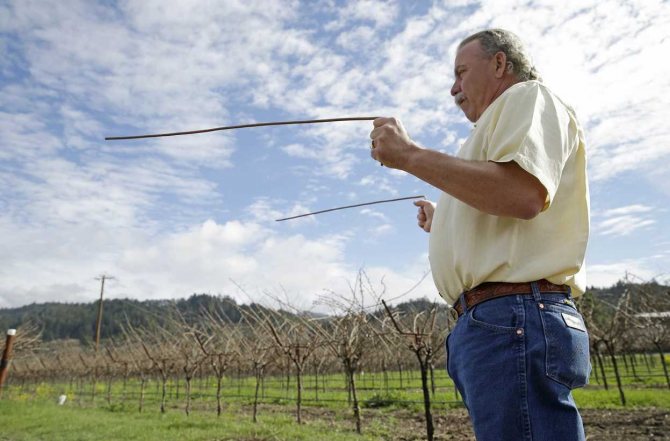
Searching for scrap metal with a vine
Using a Pendulum
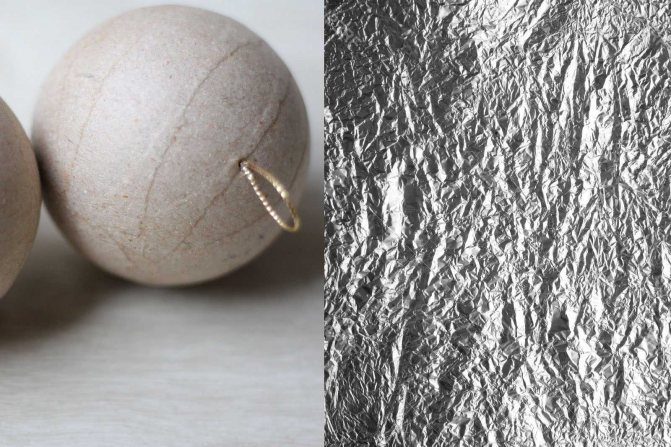
balloon and foil
How to find scrap metal without a metal detector and a rod? A pendulum , some search engines will say, and they will be right. The required pendulum is made as follows. A sphere with a diameter of 200...250 mm is made from thick cardboard or plastic, which is suspended on a thin thread 800...1200 mm long made of cotton. The outside of the sphere must be covered with thin metal foil, this will give the object the ability to capture electromagnetic waves. The length of the thread is determined experimentally. To do this, place a steel sheet under the pendulum, and begin to remove/bring the pendulum closer to it until it begins to rotate. With such a device, according to experienced searchers, it is also possible to find metal hidden by a layer of earth.
A pendulum is, of course, an exotic way to search for scrap ferrous metals, but it’s worth a try.
pits

There are different pits - they dig both in depth and in breadth
Another means is trenching or trenching - successive cutting of soil 150...200 mm thick in the search area. drill longitudinally or circularly. In the first case, two or three parallel trenches are dug. In the second there are several concentric ones. The method is very labor-intensive, so it should be used after the preliminary search results, which showed a vine and a pendulum. They excavate mainly in the warm season, placing trenches at a distance of no closer than 500 mm from one another. The depth of the trench, for reasons of safety and convenience, should not exceed 150% of its width, otherwise it will be inconvenient to dig.
Using metal probes
To search for scrap metal in this case, you will need a so-called search probe (metal pin) - moderately hard, light and not fragile, about 1.5-2 m long. The search scheme is simple: find a place to search where there is potentially scrap metal in the ground and use a probe (piercing method) to look for metal. The soil for such a search must be soft and loosened - a light marshy area or a plowed field is ideal, as well as other places where it does not require a huge effort to pierce the ground.
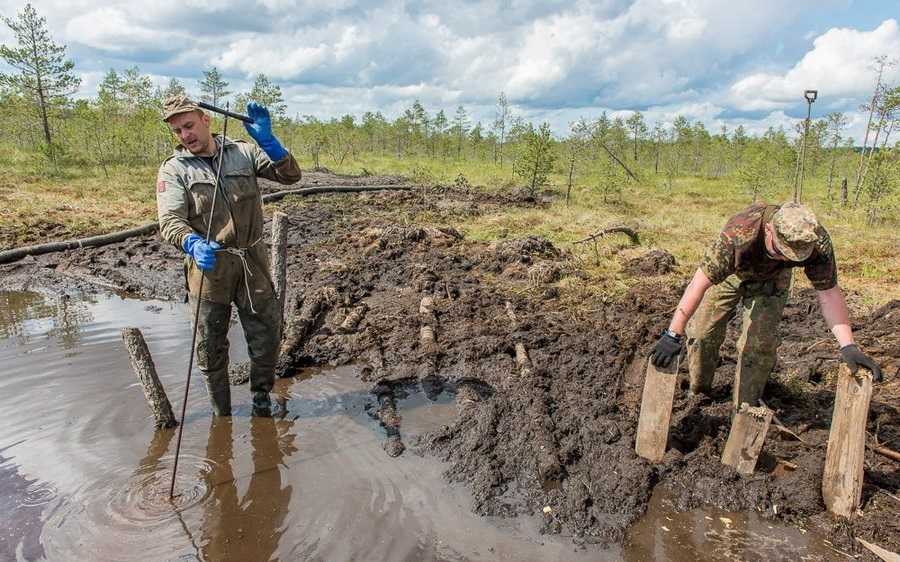
Searching for scrap metal with a search probe
It is clear that the pin needs rigidity so as not to bend, light weight so as not to quickly get tired of searching, and the absence of fragility will not allow the pin to break. Both fittings and a hexagon may be suitable here
How can you mine Au?
To do this you will need the following equipment:
- The tray is better if it is blue: against this background, the yellow grains become especially noticeable.
- The gateway is the second stage of treatment from sand and other impurities, as it has special inserts on which heavier Au settles, and everything else is washed out.
- Tools – gold is mined in cracks using a pick or pick.
- Miniature gold dredge. Lightweight portable floating gold mining equipment. A budget option that makes it easier to search for aurum in rivers, it passes through up to 10 cubic meters of water per hour. With its help, panning for gold will be easier.
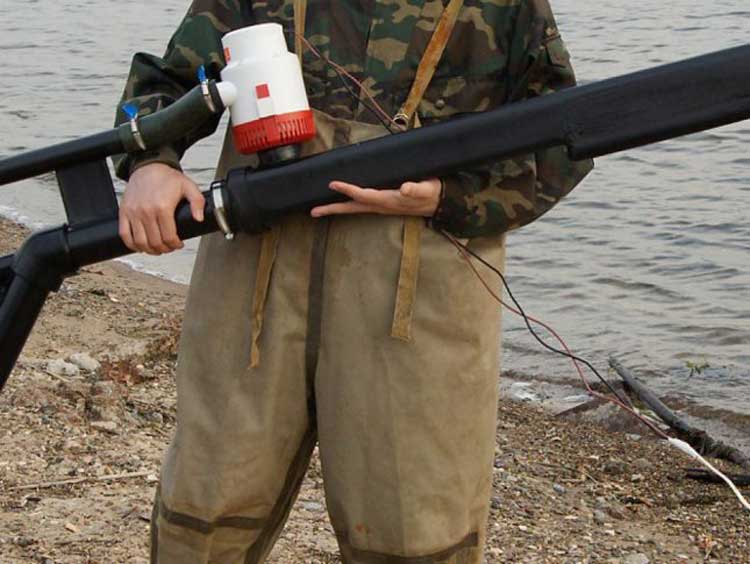
Extraction technologies
There are fewer deposits and they are being depleted. Therefore, the ability to separate gold from ore is especially valued. Here is a list of the best techniques:
- amalgamation;
- heap leaching;
- etching.
Methods for extracting gold from river beds
The sifting and washing method involves passing river sand through a sieve, tray or burlap by hand. Only Au particles larger than a grain of sand remain in the dish.
Mechanisms - dredgers, pumps, screens - dig the mass from the bottom, deliver it to the shore and quickly process it, sifting out the excess. At the same time, the amount of manual labor and the time spent on it are reduced.
